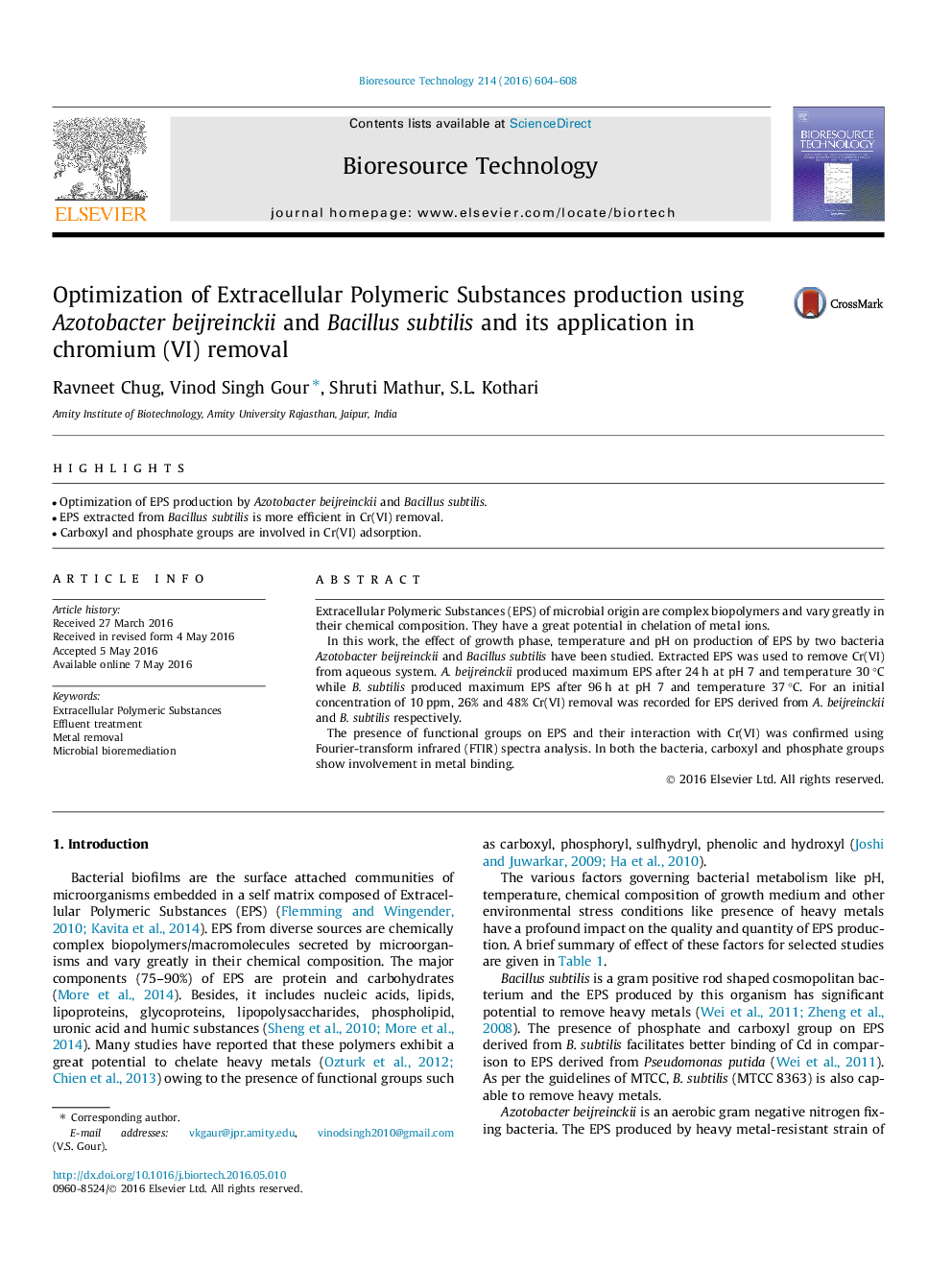| Article ID | Journal | Published Year | Pages | File Type |
|---|---|---|---|---|
| 679105 | Bioresource Technology | 2016 | 5 Pages |
•Optimization of EPS production by Azotobacter beijreinckii and Bacillus subtilis.•EPS extracted from Bacillus subtilis is more efficient in Cr(VI) removal.•Carboxyl and phosphate groups are involved in Cr(VI) adsorption.
Extracellular Polymeric Substances (EPS) of microbial origin are complex biopolymers and vary greatly in their chemical composition. They have a great potential in chelation of metal ions.In this work, the effect of growth phase, temperature and pH on production of EPS by two bacteria Azotobacter beijreinckii and Bacillus subtilis have been studied. Extracted EPS was used to remove Cr(VI) from aqueous system. A. beijreinckii produced maximum EPS after 24 h at pH 7 and temperature 30 °C while B. subtilis produced maximum EPS after 96 h at pH 7 and temperature 37 °C. For an initial concentration of 10 ppm, 26% and 48% Cr(VI) removal was recorded for EPS derived from A. beijreinckii and B. subtilis respectively.The presence of functional groups on EPS and their interaction with Cr(VI) was confirmed using Fourier-transform infrared (FTIR) spectra analysis. In both the bacteria, carboxyl and phosphate groups show involvement in metal binding.
